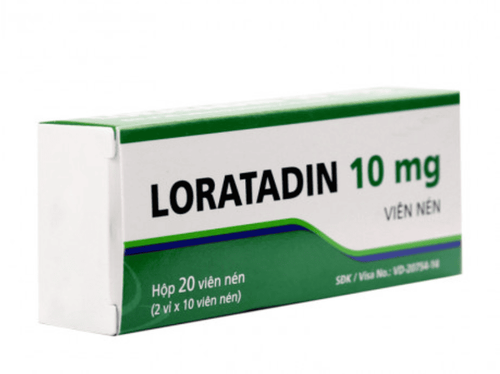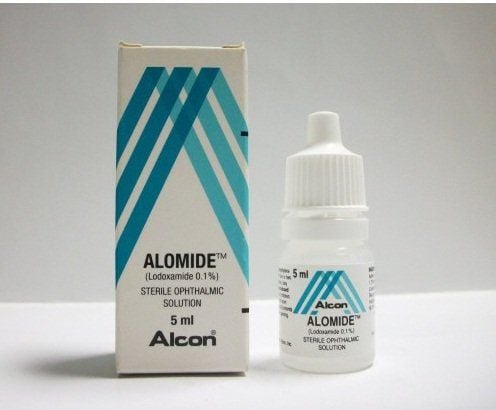This is an automatically translated article.
Ceratex medicine has the main active ingredient is Cetirizine dihydrochloride with the strength of 10mg and other excipients in sufficient quantity. This is a drug with anti-allergic effect and used in cases of hypersensitivity reactions.
1. What is Ceratex?
What is Ceratex? Ceratex medicine has the main active ingredient is Cetirizine dihydrochloride with the strength of 10mg and other excipients in sufficient quantity. This is a drug with anti-allergic effect and used in cases of hypersensitivity reactions.
Ceratex is made in the form of hard capsules, suitable for direct oral use. Packing is a box of 10 blisters and each blister contains 10 tablets or a bottle of 200 pills.
1.1. Pharmacodynamics of the active ingredient Cetirizine dihydrochloride Cetirizine dihydrochloride is an antihistamine, an H1 receptor antagonist.
1.2. Pharmacokinetics of active ingredient Cetirizine dihydrochloride Absorption: Active ingredient Cetirizine dihydrochloride is absorbed orally, peak blood concentration is at 0.3 mcg/ml, 30 to 60 minutes after taking a dose of 10mg. The absorption of this drug varies between individuals. Distribution: Active substance Cetirizine has a strong ability to bind to plasma proteins (about 93%). Elimination: Renal clearance is 30ml/min and half-life is approximately 9 hours. 1.3. Effect of the active ingredient Cetirizine dihydrochloride Active ingredient Cetirizine is a potent antihistamine with antiallergic effects, but does not cause drowsiness at pharmacological doses. Active ingredient Cetirizine has a selective antagonistic effect at H1 receptors, but almost no antagonism of Acetylcholine and no antagonism of Serotonin. The drug induces inhibition of the early phase of histamine-mediated allergic reactions. This active ingredient also reduces the migration of inflammatory cells and reduces the release of chemical mediators at the late stage of the allergic reaction.
2. What are the effects of Ceratex?
What does Ceratex do? The drug Ceratex is used in the treatment of the following diseases:Treatment of signs and symptoms of allergic manifestations; Allergic rhinitis , runny nose of seasonal and non-seasonal nature; Skin diseases that cause itching due to allergies; Chronic urticaria; Allergic conjunctivitis. You need to pay attention to using Ceratex according to the indications, including the uses and functions for those listed on the Ceratex drug instruction sheet or the prescription sheet of the treating doctor.
3. Usage and dosage of the drug Ceratex
Ceratex is made in the form of hard capsules, suitable for direct oral use. Dosage for adults and children over 12 years old: usual dose: 10mg/day. It should be noted: The above drug dosage is for reference only, patients need to see a doctor to be prescribed and advised on dosage appropriate to their condition and drug response status. Patients need to strictly follow the instructions to achieve high efficiency and avoid unwanted side effects.
4. Undesirable effects of the drug Ceratex
During the use of Ceratex, users may experience some unwanted effects, specifically as follows
Common side effects are drowsiness, fatigue, dry mouth, sore throat, dizziness. , dizziness, headache, nausea. Uncommon side effects: anorexia or increased appetite, urinary retention, flushing, increased salivation. Rare side effects: hemolytic anemia, decreased platelet count, severe hypotension, anaphylactic reactions, hepatitis, cholestasis, glomerulonephritis. Usually, the side effects or unwanted effects of Ceratex will go away when you stop taking the drug. If you see rare side effects that are not listed in the leaflet, you need to take the initiative to notify your doctor immediately.
5. Ceratex drug interactions
The clearance of the active substance Cetirizine is slightly decreased when co-administered with Theophyllin.
Ceratex drug interactions may change how it works or increase the effects of unwanted effects. You need to proactively list to your doctor or pharmacist all the prescription and nonprescription drugs, vitamins and minerals, herbal products and wellness foods you are taking to minimize possible drug interactions.
6. Some notes when using Ceratex
In the process of using Ceratex, patients should note the following issues:
6.1. Contraindications of the drug Ceratex Contraindications of the drug Ceratex in the following cases:
People with a physical sensitivity or hypersensitivity to the drug components or to Hydroxyzine. People who are suffering from kidney failure Children under 12 years old. Women who are pregnant or breastfeeding. 6.2. Notes and precautions when using Ceratex Ceratex should be used with caution in the following cases:
Do not use for people who need high concentration such as driving or operating machinery. Avoid using drugs containing the active ingredient Cetirizine, specifically Ceratex, with alcohol or other CNS depressants, as this can impair alertness. Dosage reduction for elderly patients Dosage adjustment for those with liver or kidney failure Ceratex should not be used during pregnancy. Breastfeeding women should not use this medicine, because of the active ingredient Cetirizine. excreted in milk. 6.3. How to store Ceratex medicine is to store it in a cool, dry place. Avoid exposure to direct sunlight. In addition, it should be kept out of reach of children and household pets.
Above is all information about the drug Ceratex, patients need to carefully read the instructions for use, consult a doctor / pharmacist before using. Absolutely do not arbitrarily buy Ceratex to treat the disease at home, because there may be unwanted side effects to health.
Follow Vinmec International General Hospital website to get more health, nutrition and beauty information to protect the health of yourself and your loved ones in your family.













